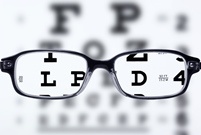
by admin | Mar 31, 2017 | Employee Benefits, Group Benefit Plans, Human Resources
 The age-old adage, “you get what you pay for,” certainly holds true in the stop loss industry. I cannot stress enough how important it is to look at more than just the premium rates on a spreadsheet.
The age-old adage, “you get what you pay for,” certainly holds true in the stop loss industry. I cannot stress enough how important it is to look at more than just the premium rates on a spreadsheet.
To understand the importance, let’s use the auto insurance industry as a comparable example. If you were purchasing car insurance for yourself, would you always accept the lowest price without doing a coverage comparison? How would you know if that insurance company might jack up your rates on renewal, or once you have an accident, or possibly delay your claims and find every reason or loophole not to pay them?
Apply that same thinking to stop loss coverage with larger dollar amounts at risk. Not every stop loss policy is alike and not every carrier is going to provide you with the coverage you are seeking. As an employer, you want to make sure the employee benefit plan you sponsor for your employees will not result in any significant liabilities for your company. You want the peace of mind of knowing there won’t be any surprises along the way.
All stop loss carrier policies are different. Over my 20-plus years in the industry, I have seen some very unique language and provisions in stop loss policies that most people would not notice without looking at the fine print. You must be aware of these potential provisions that could cause significant gaps in coverage between your employee benefit plan and your stop loss policy.
How can you best protect your company? You can start by working with your broker or administrator to narrow down the list of stop loss providers to those that best meet your needs. Brokers and administrators are best suited to understand the complexities of stop loss insurance and provide you with the best possible information regarding policies and choices.
By keeping this, and the following items, in mind during your selection process, you should be able to find a carrier to serve your needs.
The most important advice I can provide is to look beyond just price and at the actual stop loss policy. The lowest price doesn’t always mean the best value. So make sure to:
- Read the stop loss policy before you purchase your coverage
- Ask for a sample policy
- Understand ALL the provisions of the policy itself
- Ask your broker or administrator to review the policy if you don’t understand all the provisions
Additionally, there are a few other things you will want to look for, or ask about, when selecting a stop loss carrier. In part two of this blog, which will be posted the first week of April, I will discuss some of the most frequent items I have seen that cause issues or gaps in coverage.
By Steven Goethel, Originally Published By United Benefit Advisors

by admin | Mar 29, 2017 | Cybersecurity, Human Resources
 I’ve looked at clouds from both sides now
I’ve looked at clouds from both sides now
From up and down and still somehow
It’s cloud illusions I recall
I really don’t know clouds at all
— Joni Mitchell, “Both Sides, Now”
And like that song from 1969, it appears that most employees really don’t know cloud computing at all. In an article on the Society for Human Resource Management’s website titled, “Public Enemy No. 1 for Employers? Careless Cloud Users, Study Says,” a North American IT solutions and managed services provider called Softchoice found that 1 in 3 users of cloud-based apps (e.g., Google Docs and Dropbox) download the app without letting their IT department know. Cloud computing became popular a few years ago because people could store all their documents, photos, and other information and then access that data from anywhere at any time and on any device.
What makes this such a bad situation is not the cloud computing itself, but that the vast majority of employees lack any sense of cybersecurity. That same study found that 1 in 5 employees:
- Keep their passwords in plain sight (e.g., on Post-it Notes on their desks).
- Have accessed work files from a device that was not password-protected.
- Have lost devices that weren’t password-protected.
Complicating this further is that the employees who actually do use passwords usually have weak passwords. That is, they are easy to guess (e.g., “1234,” “password,” or their username). Rather than leave a company and its network vulnerable to attack, some IT people suggest a ban on cloud accounts for work.
Security breaches involving a company’s intellectual property can be very costly. Sometimes referred to as “ransomware,” the important data of an organization will either be stolen or encrypted and will not be released until a fee is paid.
A better solution to a ban on cloud accounts would be to educate employees on the necessity for cyber security, train them to improve their online security habits, and remind them that IT rules are in place to make a company more secure, not make it more difficult for employees to be productive. Cyber thieves are clever and when they can’t break into a system using technology, they often rely on the flaws of human nature.
As we become more and more connected to the Internet, we leave ourselves and the companies where we work more accessible to cyber threats. It’s imperative that employees keep everything locked down.
By Tara Marshall, Originally Published By United Benefit Advisors

by admin | Mar 24, 2017 | ACA, Group Benefit Plans, IRS
 A fixed indemnity health plan pays a specific amount of cash for certain health-related events (for example, $40 per office visit or $100 per hospital day). The amount paid is neither related to the medical expense incurred, nor coordinated with other health coverage. Further, a fixed indemnity health plan is considered an “excepted benefit.”
A fixed indemnity health plan pays a specific amount of cash for certain health-related events (for example, $40 per office visit or $100 per hospital day). The amount paid is neither related to the medical expense incurred, nor coordinated with other health coverage. Further, a fixed indemnity health plan is considered an “excepted benefit.”
Under HIPAA, fixed dollar indemnity policies are excepted benefits if they are offered as “independent, non-coordinated benefits.” Under the Patient Protection and Affordable Care Act (ACA), excepted benefits are not subject to the ACA’s health insurance requirements or prohibitions (for example, annual and lifetime dollar limits, out-of-pocket limits, requiring individual and small-group policies to cover ten essential health benefits, etc.). This means that excepted benefit policies can exclude preexisting conditions, can have dollar limits, and do not legally have to guarantee renewal when the coverage is cancelled.
Further, under the ACA, excepted benefits are not minimum essential coverage so a large employer cannot comply with its employer shared responsibility obligations by offering only fixed indemnity coverage to its full-time employees.
Some examples of fixed indemnity health plans are AFLAC or similar coverage, or cancer insurance policies.
Recently, the IRS released a Memorandum on the tax treatment of benefits paid by fixed indemnity health plans that addresses two questions:
- Are payments to an employee under an employer-provided fixed indemnity health plan excludible from the employee’s income under Internal Revenue Code §105?
- Are payments to an employee under an employer-provided fixed indemnity health plan excludible from the employee’s income under Internal Revenue Code §105 if the payments are made by salary reduction through a §125 cafeteria plan?
By Danielle Capilla, Originally Published By United Benefit Advisors

by admin | Mar 22, 2017 | Benefit Management, Compliance, Human Resources, Medicare
 Entities such as employers with group health plans that provide prescription drug coverage to individuals that are eligible for Medicare Part D have two major disclosure requirements that they must meet at least annually:
Entities such as employers with group health plans that provide prescription drug coverage to individuals that are eligible for Medicare Part D have two major disclosure requirements that they must meet at least annually:
- Provide annual written notice to all Medicare eligible individuals (employees, spouses, dependents, retirees, COBRA participants, etc.) who are covered under the prescription drug plan.
- Disclose to the Centers for Medicare and Medicaid Services (CMS) whether the coverage is “creditable prescription drug coverage.”
Because there is often ambiguity regarding who in a covered population is Medicare eligible, it is best practice for employers to provide the notice to all plan participants.
CMS provides guidance for disclosure of creditable coverage for both individuals and employers.
Who Must Disclose?
These disclosure requirements apply regardless of whether the plan is large or small, is self-funded or fully insured, or whether the group health plan pays primary or secondary to Medicare. Entities that provide prescription drug coverage through a group health plan must provide the disclosures. Group health plans include:
- Group health plans under ERISA, including health reimbursement arrangements (HRAs), dental and vision plans, certain cancer policies, and employee assistance plans (EAPs) if they provide medical care
- Group health plans sponsored for employees or retirees by a multiple employer welfare arrangement (MEWA)
- Qualified prescription drug plans
Health flexible spending accounts (FSAs), Archer medical savings accounts, and health savings accounts (HSAs) do not have disclosure requirements. In contrast, the high deductible health plan (HDHP) offered in conjunction with the HSA would have disclosure requirements.
There are no exceptions for church plans or government plans.
By Danielle Capilla, Originally Published By United Benefit Advisors

by admin | Mar 17, 2017 | Employee Benefits, Health & Wellness, Human Resources
 There is no denying our industry is changing rapidly, and it’s not about to slow down. Combined with disruptive advances in technology and evolving consumer expectations, we’re seeing consumer-driven health care emerge. Take, for example, the fact that employees now spend more than nine hours a day on digital devices.
There is no denying our industry is changing rapidly, and it’s not about to slow down. Combined with disruptive advances in technology and evolving consumer expectations, we’re seeing consumer-driven health care emerge. Take, for example, the fact that employees now spend more than nine hours a day on digital devices.
There’s no doubt that all this screen time takes a toll.
- Device screens expose users to blue light. It’s the light of the day and helps us wake up and regulate our sleep/wake cycle.
- Research suggests blue light may lead to eye strain and fatigue. Digital eye strain is the physical eye discomfort felt by many individuals after two or more hours in front of a digital screen.
- In fact, digital eye strain has surpassed carpal tunnel syndrome and tendonitis as the leading computer-related workplace injury in America1.
Employees are demanding visibility into health care costs and transparency in the options available so they can take control of their own health. Consumers are more knowledgeable and sensitive to cost, and as a result becoming very selective about their care.
| Technology Exposure |
Spends more than nine hours
a day on digital devices |
| Millennials |
2 in 5 |
| Gen-Xers |
1 in 3 |
| Baby Boomers |
1 in 4 |
Lack of preventive care
Preventive screenings are a crucial piece of overall health and wellness. In fact, the largest investment companies make to detect illnesses and manage medical costs is in their health plan. But if employees don’t take advantage of preventive care, this investment will not pay off. Only one out of 10 employees get the preventive screenings you’d expect during an annual medical visit2.
It’s a big lost opportunity for organizations that are looking for a low-cost, high-engagement option to drive employee wellness.
How a vision plan can help
The good news is that the right vision plan can help your employees build a bigger safety net to catch chronic conditions early. It all starts with education on the importance of an eye exam.
Eye exams are preventive screenings that most people seek out as a noninvasive, inexpensive way to check in on their health; it’s a win-win for employers and employees.
- A comprehensive eye exam can reveal health conditions even if the person being examined doesn’t have symptoms.
- The eyes are the only unobtrusive place in a person’s body with a clear view of their blood vessels.
- And, an eye exam provides an opportunity to learn about the many options available to take control of their health and how to protect their vision.
By screening for conditions like diabetes, high blood pressure, and high cholesterol during eye exams, optometrists are often the ones to detect early signs of these conditions and put the patient on a quicker path to managing the condition. In a study conducted in partnership with Human Capital Management Services (HCMS), VSP doctors were the first to detect signs of3:
- Diabetes – 34 percent of the time
- Hypertension – 39 percent of the time
- High cholesterol – 62 percent of the time
By Pat McClelland, Originally Published By United Benefit Advisors

 The age-old adage, “you get what you pay for,” certainly holds true in the stop loss industry. I cannot stress enough how important it is to look at more than just the premium rates on a spreadsheet.
The age-old adage, “you get what you pay for,” certainly holds true in the stop loss industry. I cannot stress enough how important it is to look at more than just the premium rates on a spreadsheet.



